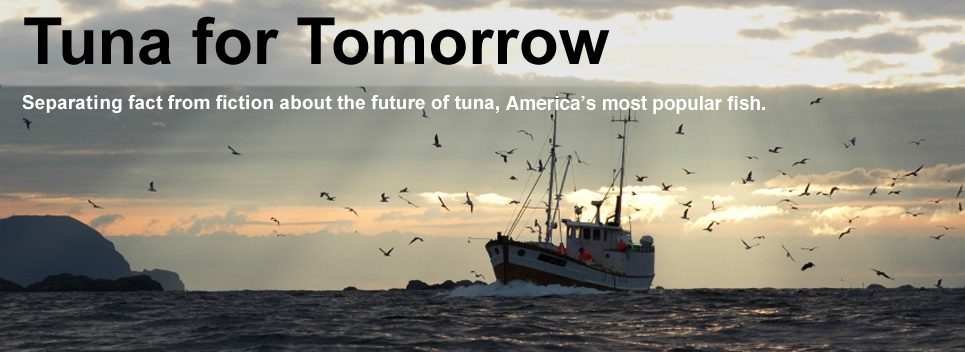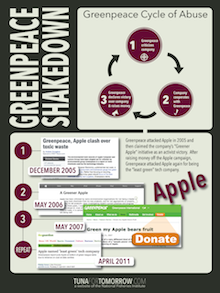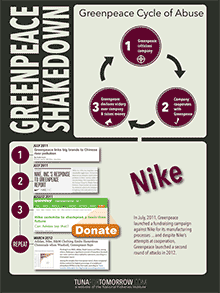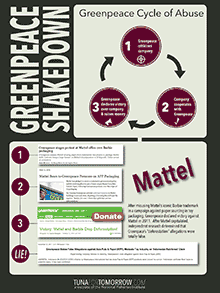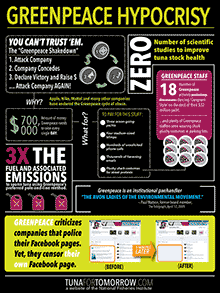Greenpeace‚Äôs narrative prior to the WCPFC Guam meeting would have you believe that no group but theirs cares about tuna conservation issues in the Pacific (or anywhere, for that matter). But Greenpeace‚Äôs simultaneous release of its PR survey results in Canada, otherwise known as a retailer ranking shows literally no difference in the goals of Greenpeace and the International Seafood Sustainability Foundation (ISSF), well, except for one.¬Ý ISSF and it‚Äôs members including the major US tuna brands, are actively doing something about it.
CBC News news in Canada writes that Canadian retailers were judged based on:
- Have a sustainability policy.
- Avoid using tuna from threatened stocks and those caught using “destructive” fishing methods.
- Are able to trace the tuna they use to its source.
- Promote marine reserves and domestic, coastal fisheries.
Guess what?¬Ý ISSF is doing all of these things and more.¬Ý And the conservationists, marine biologists and oceanic experts who form the ISSF are achieving this progress using hard, scientific data. They analyzed research conducted by the WCPFC to conclude that the Commission must
- Completely close purse seine fishery in the Western and Central Pacific Oceans (WCPO);
- Stop all transactions with purse seine vessels that transship at-sea to minimize illegal, unreported and unauthorized (IUU) fishing activities;
- Adopt a limited entry, closed-vessel registry to reduce the number of fishing vessels to a level that is commensurate with the productivity of the WCPO fisheries; and
- Prohibit deliberate purse seine setting around whale sharks, as well as, adopt mitigation measures for oceanic white tip sharks and blue sharks.
The ISSF invests in superior technology to track vessels, monitor tuna species and discover the best methods of reducing bycatch. It created a searchable database of conservation measures taken by regional fishery management organizations and another one to track vessels and make it harder for them to bypass regulations. It hosts workshops with skippers to communicate best practices and even studies vessels’ carbon dioxide emissions to pinpoint the most environmentally friendly fishing techniques.
ISSF members don’t feel like someone else should do something; they know that they have to work right alongside fishermen, tuna companies and political entities to initiate progress.
And then there’s Greenpeace — a day late and millions of dollars short — sailing around the high seas aboard the Esperanza looking for a media opportunity and footage for fundraising. Greenpeace purports to work with fishing vessels, but instead, its oceans campaigners vandalize them by painting “PIRATE” on the hull. Greenpeace activists churn out petitions, vilify tuna companies, and blame government officials, yet they incredulously think that constitutes a legitimate contribution to sustainability efforts.
So every time you read “Greenpeace’s report shows” or “Greenpeace demands that” just know that the group’s parroting the scientific findings of someone else’s critical investment and expertise. Of course, don’t expect Greenpeace to give credit where credit’s due or admit that it’s just along for the (yacht) ride.


